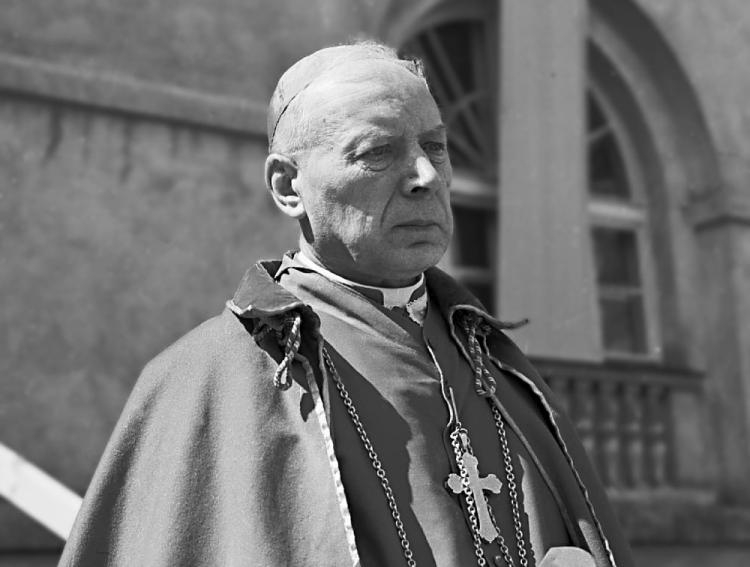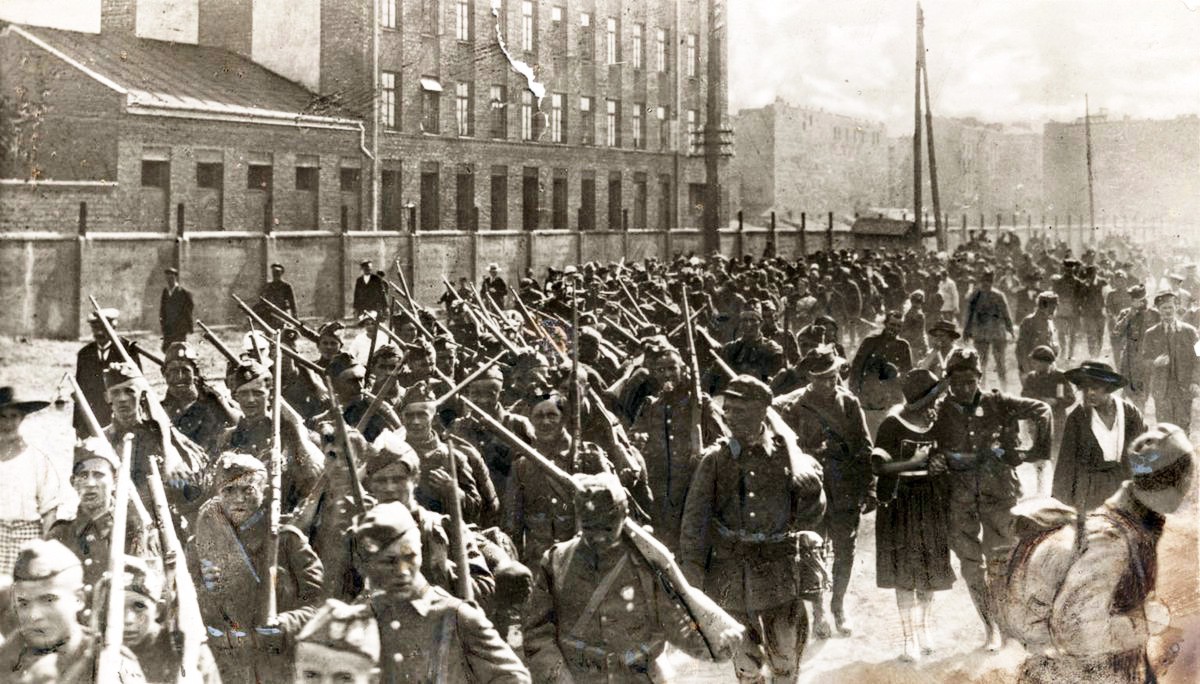Cardinal Stefan Wyszyński played an extremely important role in the history of Poland. His Primate’s ministry (1948–1981) fell entirely during the period of communist dictatorship. The Primate not only secured the survival of the Church, but also contributed to the growth of its public authority, and the formation of opposition attitudes towards the undemocratic power. Let us begin by characterising his journey to the office of Primate.
by Rafał Łatka
Rebellious and outstanding
Stefan Wyszyński was born on 3 August 1901 in Zuzela upon the Bug River, under the Russian-controlled section of partitioned Poland. He was brought up in a traditional and patriotic spirit: according to family accounts, he wanted to become a priest early on. At the age of 16, he entered the Pius X Middle School, and subsequently the Higher Seminary in Włocławek. He was ordained a priest in 1924. He developed his interests during his studies at the Catholic University of Lublin, and later during a study visit to the West in the late 1920s.
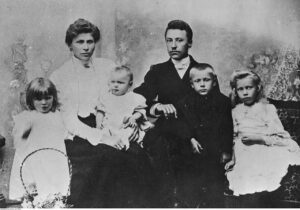
The acquired education prepared the young priest well for his pastoral work in the Diocese of Włocławek, with particular emphasis on workers’ milieus. In the interwar period of the Second Polish Republic, the future Primate was an advocate of what was referred to as Catholic dynamism, i.e. the broad involvement of Catholics in public life.
The main assumptions of this doctrine were formulated by Wyszyński’s spiritual master, Father Władysław Korniłowicz, who called for the reconstruction of Polish religiousness, referring to the thought of St Thomas Aquinas, and the personalism of Jacques Maritain. Owing to his social involvement and expressed views, Father Wyszyński was criticised by some of the Kuyavian landowners, and local nationalist circles. He was even considered a ‘red priest’, as he advocated land reform and the parcelling out of large landed estates. His ‘socially-minded’ temperament was further evidenced by his academic works and journalism, in which he devoted much attention to Marxism, assessing it critically, but also aware of its intellectual attractiveness. This output did not go unnoticed: in 1938, the then Primate of Poland, Cardinal August Hlond, appointed the young clergyman to the Social Council of the Primate of Poland.
During the Second World War, Wyszyński was in danger of being arrested by the Gestapo because of his critical works on fascism. He hid outside his diocese, inter alia in Kozłówka, Zakopane and Laski. From 1942 on, he cared for the Transfiguration Institute founded by Halina Dernałowicz, as well as a group of girls gathered around the Marian sodalist Maria Okońska, called Ósemka. Out of this group, grew the future Secular Institute of Women Helpers of Virgin Mary, Mother of Jasna Góra. In the spring of 1944, he was sworn in as a chaplain of the 7th ‘Obroża’ Circuit of the Home Army Warsaw District. The future cardinal took on the pseudonym of Radwan III. He participated in the Warsaw Rising as a chaplain of the hospital in Laski treating insurgents. He remained there until the end of the German occupation.
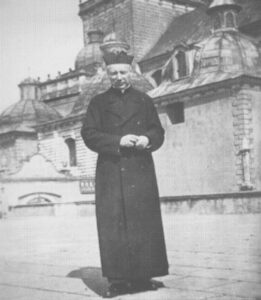
In March 1945, he returned to Włocławek, where he took the post of rector of the seminary, and began to organise it. He reactivated the pre-war diocesan periodicals and launched another one, and in the same year became a canon of the cathedral chapter in Włocławek.
Analysing the thought of Wyszyński from the post-war period, it is worth paying special attention to the cycle of over forty articles published under the common title of ‘Orderly thoughts’. The future Primate referred in them to the social challenges of the Church in the new political reality. He stressed, inter alia, the need to fight for the dignity of every man, and to care for their social upbringing, and the right to profess their faith in an unhindered fashion.
Bishop of Lublin
After the Germans had killed about 20 percent of the pre-war clergy, there was a great need for new ‘personnel’ also in the Church. This can be explained by the appointment of Father Wyszyński as Bishop of the Lublin Diocese as early as in 1946. He was ordained bishop on 12 May 1946 at Jasna Góra by the Primate of Poland, Cardinal Hlond. Back then, he was Poland’s youngest ordinary. In his sermon, Wyszyński emphasised that faith and love had a much greater unifying power than war and violence. He also pointed to the common history of the Church and the Nation.
Bishop Wyszyński took over the diocese during the difficult period of rebuilding its structures following the Second World War, widespread moral disorder, and the restriction of the rights of the Church and the nation by the communist system. The diocese required vigorous action. The new leader reorganised the deanery and parish structures, and reactivated traditional priestly associations. The intensity of the new ordinary’s work can be seen in the number of canonical visits at parishes: in less than three years, he visited almost one hundred of them. He established the Institute of Higher Religious Culture in Lublin, and inspired charity activities – e.g. of the diocesan Caritas. As Bishop of Lublin, he also became Grand Chancellor of the Catholic University of Lublin, being a patron and supporter of the post-war reorganisation of the school.
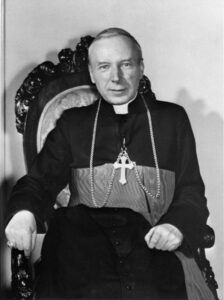
From the beginning of his ministry in Lublin, Bishop Wyszyński was opposed to the armed struggle against the communists. His view was that it had no chance of winning, and that the repressions that society would face would be disproportionate to the blood that would be shed. He believed that young people would serve Poland better by focusing on education and social activity. He did not neglect contacts with intelligentsia circles, although he was not free from criticism towards them: he drew attention to the emotional nature of their involvement, their shallowness, and the lack of a strong intellectual formation. However, he maintained lively contact with both academics from the Catholic University of Lublin (Professor Stefan Swieżawski), as well as intellectuals associated with the newly established Tygodnik Powszechny weekly.
The year 1946 and the following one marked the beginning of the Stalinist era, the most severe in Poland’s post-war history. The new Bishop of Lublin did not seek confrontation, but he did not hide his views either: in his sermons, he criticised the violation of the rights of the Church, the creeping atheisation of society, the restriction of freedom of speech, and the social plagues that were widespread after the war. In one of his reports, the priest Stanislaw Krynicki, a long-time secret collaborator of the political police and its informer, operating as Bagiński, stressed: ‘Wyszyński is an implacable opponent of the People’s Poland. No appearance of his lacks in anti-government accents’.
‘I am not a politician’. Truly?
Following the death of Cardinal Hlondon 16 November 1948, Bishop Wyszyński was appointed Archbishop of Gniezno and Warsaw, and Primate of Poland by Pope Pius XII. We know that this happened at the direct request of the Primate, dying in Warsaw. In his pastoral letter addressed to the faithful on that occasion, he stressed: ‘Am I obliged to introduce myself to you? I am not a politician or a diplomat, I am not an activist or a reformer. Instead, I am your priest, the shepherd and bishop of your souls, an apostle of Jesus Christ.’
The circumstances in which the Church functioned in post-war Poland, increasingly under communist control, were far from normal. For this reason, the Vatican decided to provide successive Primates with the extraordinary powers of papal legates. This solution, seemingly important only for canonists, was of great political significance. As papal legates, both Primate Hlond and his successor had the right to make independent ecclesiastical appointments (with the exception of the appointment of bishops), as well as to supervise religious congregations. Moreover, as the Polish territories granted to Poland by the Yalta and Potsdam Conferences were deprived of a permanent church administration; the Primate performed the function of an ordinary over them. The powers once granted by Pius XII remained in force until the Primate’s death in 1981, and were confirmed by subsequent popes (John XXIII, Paul VI, John Paul I, and John Paul II).
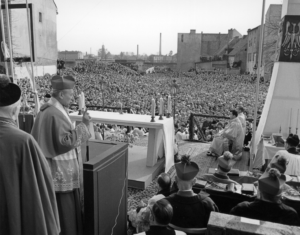
Primate Wyszyński was aware of the role played by Primate Hlond in the Polish Church, and he emphasised the continuity of his activities with the achievements of his late predecessor. He kept with him his most important collaborators, and undertook the work of rebuilding several dozen ruined churches in Warsaw, including St John’s Cathedral. He was also a patron of the reconstruction of the destroyed St Adalbert Cathedral in Gniezno.
Primate Wyszyński considered the organisation of the Polish Church administration in western and northern Poland among his most important tasks. This issue was also derived from ‘great politics’: relations between Warsaw, Moscow, Berlin, Bonn and the Vatican. Hence, it was only in 1972, almost 30 years after the war, that a papal bull was issued to regulate the canonical status of the dioceses in these territories. Until then, the organisation of the Church in these areas was directly led by an archbishop and subsequently by Cardinal Wyszyński.
Realist
Cardinal Wyszyński always placed the nation above the state. This stemmed from his conviction that ‘Polishness’ was a more permanent entity, and much more deeply rooted in reality than any administrative structure, whether established by citizens or – in the case of post-war Poland – external forces. At the same time, he was close to a realist’spoint of view: he was of the opinion that the post-war political and social changes would be permanent, that Poland’s social structure would change, while its geopolitical status (far-reaching subordination to the Soviet Union) would remain in place for a longer time.
This was the source of his realism, for which many criticised him: he consistently believed that the Church was forced to work out a modus vivendi with the communists, which would make it possible for the institution to carry out its pastoral mission.
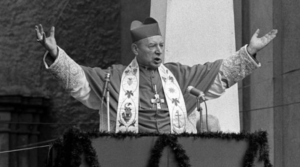
The conclusion of the ‘Agreement’ with the authorities of the Polish People’s Republic in April 1950 resulted from this very assumption.It guaranteed the Church in Poland communication with the Holy See, and the possibility of carrying out pastoral activity. The price for that was the lack of ostentatious opposition of the Episcopate to the state programme of collectivisation of agriculture, and its condemnation of the armed activities of the independence-minded underground.
This was not a simple compromise. Under these circumstances, Archbishop Wyszyński attempted to avoid situations that could be regarded by Polish society as legitimising the authorities. He also opposed attempts to subordinate the clergy to the state. This found its expression in the famous letter entitled ‘Non possumus’ (‘We do not agree’) sent to the authorities by the Episcopate in May 1953, on the initiative of the Primate, in which a protest was voiced against the decree, rendering every ecclesiastical nomination dependent on the consent of the communists.
For the communist authorities, this letter was a major offense. When – a few months later – the Primate failed to agree to condemning Bishop Czesław Kaczmarek, sentenced in a show trial, it prejudged the decision to arrest him.
Forced isolation
Security apparatus officers arrested the Primate on the night of 25–26 September 1953. He was never formally charged, so his imprisonment could be described as ‘illegal internment’, which lasted over three years. During that time, Archbishop Wyszyński was kept in isolation in successive monasteries: Rywałd, Stoczek Warmiński, Prudnik, and finally in Komańcza. He was deprived of all rights, including those of prisoners. He was intensively monitored by means of wiretaps and agents. His correspondence was restricted, and letters from his family were carefully cut out.
The officers guarding Wyszyński reported regularly on his behaviour and activities. In Stoczek and Prudnik, he was accompanied by fellow prisoners Father Stanisław Skorodecki and Sister Leonia Graczyk from the Congregation of the Sisters of the Family of Mary. They denounced him regularly – Father Skorodecki as a source known as ‘Krystyna’, while Sister Graczyk as ‘Ptaszyńska’ and ‘Kruszyna’. Cardinal Wyszyński gained greater freedom only in his final place of internment, i.e. Komańcza. This was due both to the political thaw, which was already quite advanced in the autumn of 1955, and to the demands of the Episcopate.
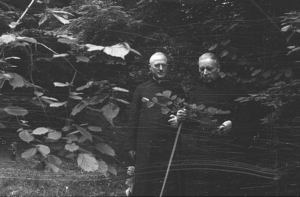
In spite of the difficult conditions, the Primate did not fall into doubt. He mobilised himself for intensive intellectual and programme work. During his imprisonment, he worked out the premises of the programme of the Great Novena and the Millennium of Poland’s Baptism. Inspired by Maria Okońska, he formulated the text of the Jasna Góra Vows of the Polish Nation. The text was delivered to Jasna Góra, and the Vows were taken by a million believers – without the participation of the Primate – on 26 August 1956.
In late October 1956, on the orders of the First Secretary of the Central Committee of the Polish United Workers’ Party, Władysław Gomułka, high party officers arrived in Komańcza, and informed the Chairman of the Polish Episcopal Conference about the end of his isolation, and asked for a quick return to the capital. The Primate presented the delegates with the conditions of his return: he demanded the release of other bishops, and their return to their home dioceses, the annulment of the decree on filling church posts, and the resumption of the work of the Mixed Commission. His conditions were met.
Author: Rafał Łatka – Historical Research Office of the Institute of National Remembrance
Translation: Mikołaj Sekrecki

